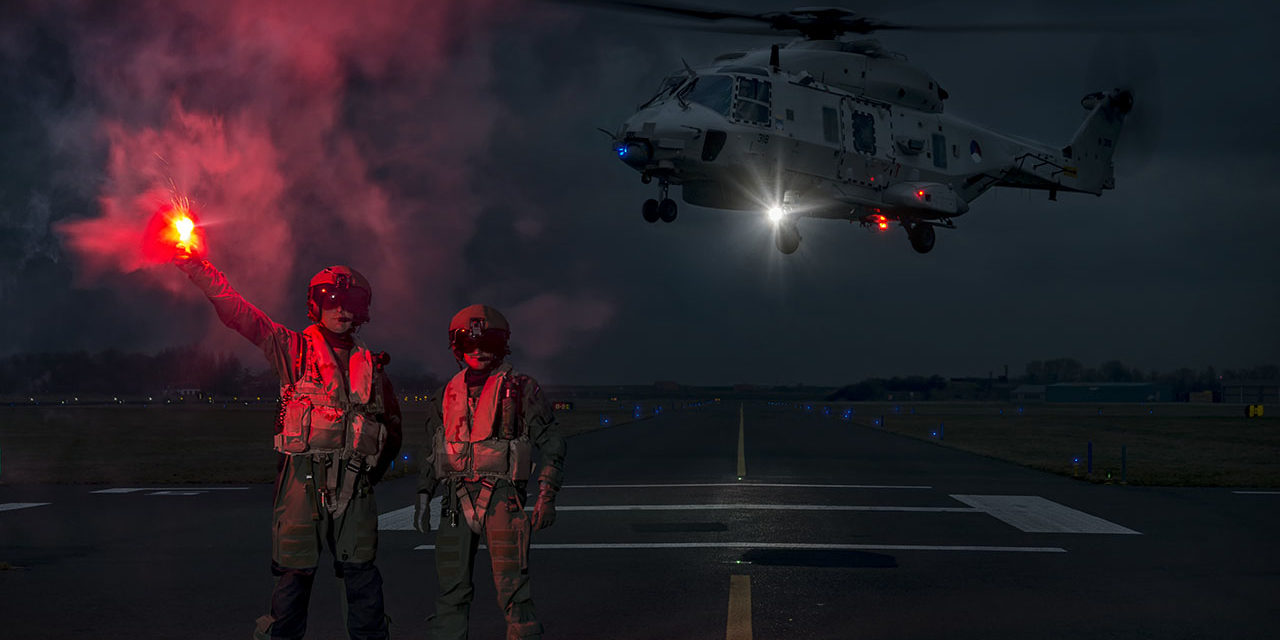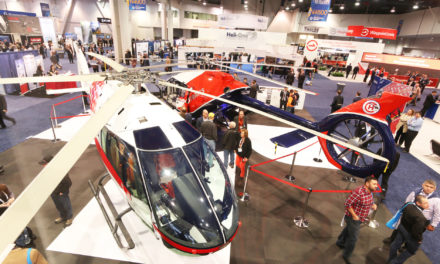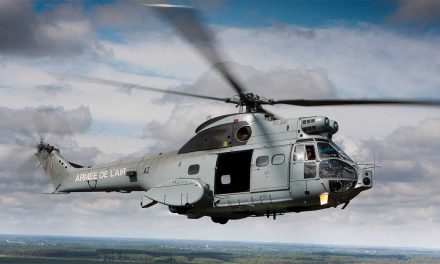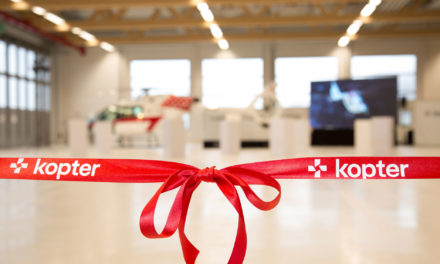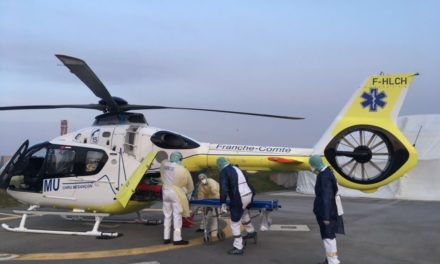Text by Jeroen van Veenendaal
Photo’s by Roelof-Jan Gort, Ralph Blok, Jeroen van Veenendaal (DutchAviationPhoto.com)
In the year 2000, a production contract was signed, by the Dutch MoD, for 20 NH90 NFH (NATO Frigate Helicopter) maritime helicopters. The so-called N2 helicopters were bought to replace the aging fleet of Westland Lynx helicopters that was in use by the Royal Netherlands Navy since 1976. The NH90 was developed and is manufactured by NHIndustries, a collaborative company, which is owned by Airbus Helicopters, Leonardo and Fokker Aerostructures. The first prototype conducted its maiden flight in December 1995; the type first entered operational service in 2007. In 2010, The Netherlands became the first country to receive the NFH variant.
All 20 NH90s are stationed at the De Kooy Naval Air Station. There are two squadrons, 7 squadron for training, and the 860 squadron which is the operational NH90 squadron. Both squadrons are covered by the Defense Helicopter Command (DHC) which consists of both Air Force and Navy personnel. The Navy indicates where they want capacity and the DHC can make an offer based on availability. In the planning cell, supply and demand are coordinated.
We spoke to 860 squadron commander Niels Kleingeld and to Captain Gerwin and Captain Thijs. Commander Kleingeld explains: “We look at the importance of deployments. Of course the Navy wants to have a helicopter with them in the Dutch Caribbean and for anti-piracy missions, but also for large preparation moments of ships to get ready for the mission area.” There are people from the Navy as well as from the Air Force that go to fly the NH90, or work as a crew member.
Training
So how do you become a NH90 pilot in The Netherlands? Commander Kleingeld describes the process: “An NH90 pilot starts training at Woensdrecht Air Base on the PC-7, that is identical for the Air Force and Navy pilots. For the Air Force you are then assigned to a type, the Navy students will be a NH90 pilot. After Woensdrecht they go to Bückeburg Air Base in Germany. It is one of the most modern International training centers for rotorcraft in Europe. After they have had their initial basic training helicopter flying at Bückeburg the students come to the 7th (training) squadron and get a type rating.” Captain Thijs adds: “Then it still takes a year before you are fully trained to step in as a co-pilot.” The pilots have to work from being a co-pilot to being a full pilot, and automatically there is ‘a trip’ linked to it. That ‘trip’ could be going to the Caribbean for anti-drugs, to Somalia to fight piracy, or going on a NATO trip to the Baltic Sea.
SIMULATOR
Kleingeld: “We actually do the type rating, the mission training, the training to land on board of a ship, tactical training of the tactical coordinators, the hoist training of a pilot or operator, we all train this at our home base. We have a procedure trainer to train how to follow certain procedures, but we also have a full mission flight trainer. The simulator currently is still in Milan, but will be relocated to the Netherlands early next year. It is a fantastic trainer, consisting of a flight simulator, and a virtual sensor trainer. We can both link these to a full mission flight trainer so we can prepare crews at a high level.”
Captain Gerwin, who is also an Instructor pilot on the NH90 notes the advantages of having it at NAS De Kooy: “The simulator was purchased by the Dutch MoD, it will be useful to have it on location. Now we are spending a lot of time on traveling, people who are over there can not be used for other tasks. It will give a huge reduction in work pressure.”
Captain Thijs adds: “The power of the simulator is that cameras are aimed at you everywhere, and it is flawlessly recorded how the crew works together. If you have done your mission, you can immediately look back. That is super valuable.
DUMMY DECK
A dummy deck is also being constructed at NAS De Kooij, a replicated ship deck to get the pilots qualified on deck operations. Kleingeld emphasises the importance: “A helicopter deck is relatively small, the NH90 has a weight of 11 tonnes, at night we fly with night vision goggles, with the ship movement, that requires a lot of skills of the pilot. I think it’s one of the most risky things we do. With the Dummy Deck we can train it in a controlled environment first.” The deck will be the size of a Landing Platform Dock, training to takeoff and land can be done on two spots at the same time. The dummy deck will be finished later this year.
CREW SETUP
To fly the NH90 the setup of the crew varies. Besides the pilot and copilot, there are various other tasks to be fulfilled. When operating tactically, there is the need for someone who takes care of the tactical situation, who coordinates with the ship. This is done by a tactical coordinator (TACCO), who sets the helicopter based on orders he receives from the ship, he provides the information that the ship requests.
The sensor operators also play a very important role, especially in warfare configuration. There are two sensor consoles in the back of the helicopter, depending on the mission one or two operators can be used. Commander Kleingeld explains why: “At the very beginning we flew with one sensor operator, who had to operate the radar, who had to operate the sonar, FLIR, electronic warfare, sonar buoys, and uplink. That task load was too high for one sensor operator, so we are now in the process of doubling sensor operators.”
Then there are mission essential people, for counter piracy and counter drug operations, a Rescue Operator Aerial Marksman (ROAM) can be taken on board the helicopter. He operates the sniper gun, for example to take out the outboard motors of a drugs boat. But he is also trained as a rescue operator. When in a Search And Rescue action, he is the man who goes down first, who ensures that the patient is well packed in the stretcher, who accompanies the doctor, and who gives medical assistance.
INTERNATIONAL PROJECT
The NH90 arose from the idea of developing a joint NATO helicopter. There is still a close collaboration with other countries. The Netherlands is a lead nation in the project, together with France. Commander Kleingeld names some sharing examples: “All kinds of data are shared, varying from maintenance data to various procedures, how to deal with sensors, how to set up sensors, how to get the most out of the radar.” There is also an extensive cooperation with the Belgians. Spare parts are shared with Belgium. This reduces costs, as the Belgian Navy operates the same N5 variant of the NH90.
There are different versions of the NH90, and that makes sharing and updating difficult. Eventually, almost every country has developed their own version of the helicopter. There are all kinds of options, for example with sensors you could choose from a German, French or Italian version at the time. Countries tried to protect their own industry, including orders. The fact that the companies in the NHIndustries consortium are competitors does not help.
TEETHING PROBLEMS
The Westland Lynx that flew with the Royal Netherlands Navy had to be replaced. The first NH90 helicopters that were delivered in 2010 were ready to fly, but did not have fully developed mission equipment. Kleingeld recalls how it went: “We got MOC (Meaningful Operational Capable) helicopters, and during the time that helicopters were delivered, they were delivered in different versions. When those helicopters had to be brought to the contractual final version, they had to go through retrofit programs. These are very long-term projects” That meant that the Defence Helicopter Command deployed helicopters that did not receive the full update package yet. Captain Gerwin: “The Netherlands had deliberately chosen to use it to absorb experience, knowing that there might be consequences. A deployment was done like this and more corrosion was detected than would normally be the case.” Captain Thijs adds: “An open sea, an ocean, you can not have much worse conditions for your equipment. That is really a big challenge. The Netherlands was the first nation to take an NH90 on board of a ship for an extended period of time.” Despite the fact that the image of the helicopter is continues to haunt the NH90 in the media, the commander and both of the pilots agree: “The corrosion problem is not an issue anymore.” The production of flying hours starts to boost, the availability of the helicopters is getting better, experience and confidence is growing. Kleingeld: “In the beginning, the engineers did not really dare to make the decisions, can you fly with them or not. We had to contact the industry. We now know exactly how to treat the helicopter, what we have to do during the trip to prevent corrosion.”
ROLES AND TASKS
The N5 version The Netherlands has purchased can be used in two roles. Twelve NH90 helicopters are equipped as NATO Frigate Helicopter (NFH). They are equipped with all systems necessary for the maritime combat task. Eight copies are used as Tactical NATO Frigate Helicopter (TNFH). As a tactical transport helicopter, they are used both on land and at sea. To carry out the transport task, systems have been removed like the sonar and the control station of the sensor operator. This provides space and a weight saving. In the TNFH role, the aircraft is equipped with a missile warning system for the occurrence over land.
Depending on the missions, the NH90 can be converted to an amphibious version or a version that is capable of maritime warfare, but the base is the same for all 20 helicopters.
Kleingeld sums up some of the tasks the NH90 can perform: “Everything we did with the Lynx, we also do with the NH90. One of the largest tasks is surface warfare, the NH90 is very suitable to perform reconnaissance at sea, to protect trading routes and to perform anti-piracy operations, we can execute anti-submarine warfare by mapping the underwater areas. Other tasks we carry out are counter drugs operations in the Caribbean, we can perform SAR missions with the NH90, it can be used for fast-roping, we use it to carry external loads but also internal loads or troops. It is a very multi-role, capable helicopter but the unique part are the warfare capacities.”
EMERGENCY AID
The helicopter is already intensively used for emergency aid and disaster relief. For Captain Thijs it was an experience he will never forget: “On September 6th 2017, hurricane Irma struck Sint Maarten island. We were the first on the spot. The Dutch Navy ship (ZMS Zeeland) was about 100 miles south of the island because the weather was still very restless. We flew in the afternoon with a combat camera team and made the first images. It was still very turbulent. We took a combat camera team with us to make images to send into the world and to see what the situation was on the island. The day after, it was all over the media, and the emergency aid started because of the severity of the situation over there. That was a very memorable flight, because you can really make a difference.” Thijs not only provided medical flights and provided food and water to the local community, but also helped keep the island safe. “We went flying at night because there was looting, people felt unsafe, so we flew a lot with the searchlight. Plunderers had invaded a building, where the police stood and we were there with the searchlight and all our sensors to observe and provide support. With the infrared camera you can see exactly where people are walking. Everything we see is then passed on to law enforcement on the ground. For the people who live there it makes an impression, something is being done about the situation and they feel safer.” For two weeks support missions were flown, and then the exact same thing happened, hurricane Maria struck the island of Dominica, leaving immense damage. Thijs: “Because Dominica has a lot of mountains there have been landslides, there were a lot of trees on the road so you really came into situations where people who have not seen food or drinks for a week. We were also two weeks in Dominica. After the two weeks, the roads were free and large planes could land at the airport again, then the big help started, the hospital was up and running again.”
COUNTER DRUGS OPERATIONS
Drugs are a big problem in the Caribbean. The NH90 plays an important role in large drug seizures in the area. Captain Gerwin: “We can detect something on a long range with the sensors we have on board, and because we have a good endurance with the helicopter, we can also apprehend the suspect. The US helicopters are not able to do this. We fly a lot of surveillance, we do not have a wait-and-see attitude to wait until the call comes.” Commander Kleingeld specifies: It is the combination of elements: the ship, the helicopter, and a boarding team. The helicopter can search a large area, and can stop a drug boat with force if needed. You need a boarding team, often from the Americans, because we are doing the prosecution in the USA, who can apprehend such a drug boat, and of course the ship as a command and control platform, but also with the airport facilities in it, those three elements are crucial.” The Dutch Navy has close ties with the USA, a lot of intelligence is provided by them, but sometimes own intelligence is used as well.
WARFARE
Twice a year an exercise in submarine warfare is held on RNAS Culdrose in the United Kingdom. The helicopter differs from its predecessor, the Westland Lynx, through a coherent mission system. The NH90 is equipped with a helicopter long-range active sonar (HELRAS), but can also work in combination with sonar buoys. As a weapon platform and as a sensor platform it is perfect for anti submarine warfare. Besides the HELRAS, the NH90 suited with inverse synthetic aperture radar (ISAR). Thanks to the radar and sonar, the crew can look over water over long distances and also under water. Among other things, the thermal imaging equipment (FLIR) makes it possible to perform the tasks in the dark, with bad weather and poor visibility. The FLIR can also visually identify the targets that have been found at a great distance with the radar.
The NH90 can be armed with a MAG or M3M as a door gun, but there is also the possibility to carry torpedoes. With the Lynx, the Royal Netherlands Navy was very experiences in deploying torpedoes, they now try to apply the tactics and procedures to the NH90. But Kleingeld is already looking towards the future: “We have the Mk46 torpedo but it is at the end of its lifespan. A number of torpedoes are in the market to replace it, and I expect in 2021 that we will also have a new modernized torpedo to be more effective against more modern submarines.” He is also exploring the possibility of implementing a helicopter air to surface missile: “We are the extended arm of the ship, you must also be able to carry a missile under a helicopter. That is a wish for the long term.” The NH90 has provisions for a Marte anti-ship missile, but the Norwegians have already tested the Naval Strike Missile under the NH90.
MIDLIFE UPDATE
Commander Kleingeld has a long-tem vision: “The NH90 is never fully developed, the technology is moving forward with incredible speed so fast. We are already thinking about a midlife update for sometime after 2025. You have to think now, start planning, see if we can find partner countries to work with to reduce costs. It is a very long process with the industry, it all has to be engineered. The Netherlands and Belgium are at the forefront of this, and looking if we can mobilize Germany, Norway, France, and Italy together for a kind of block upgrade, and the midlife update.” Kleingeld also receives a lot of feedback from commanders of ships: “We would like to have a video uplink and downlink, so that if you fly 150 miles in front of the ship, the personnel on board of the ship can watch along. We still have HF (long distance) bonding problems, possibly caused by a composite material, so we would very much like satellite communication on the helicopter. A daylight camera is also on the wish list, we have FLIR (Forward Looking InfraRed), but there are some drawbacks.”
But looking ahead does not mean he is not happy about how thins are going now: “After we have made a difficult start, we can now be really proud of what improvement measures are taken, and how we presently operate. As a commander, that is very nice to see. I can do this for three years and you see the build-up. You will soon see, the NH90 is a very capable platform and we are still going to try to expand that further.” Both the pilots agree: “Negative stories are actually no longer applicable to us. Where you enter a start-up phase there are hickups. We are always learning more, and we know more and more about the helicopter and how to handle it. We are very happy with the capabilities of the helicopter, what we can do with it, and what we will be able to do with it in the future.”

